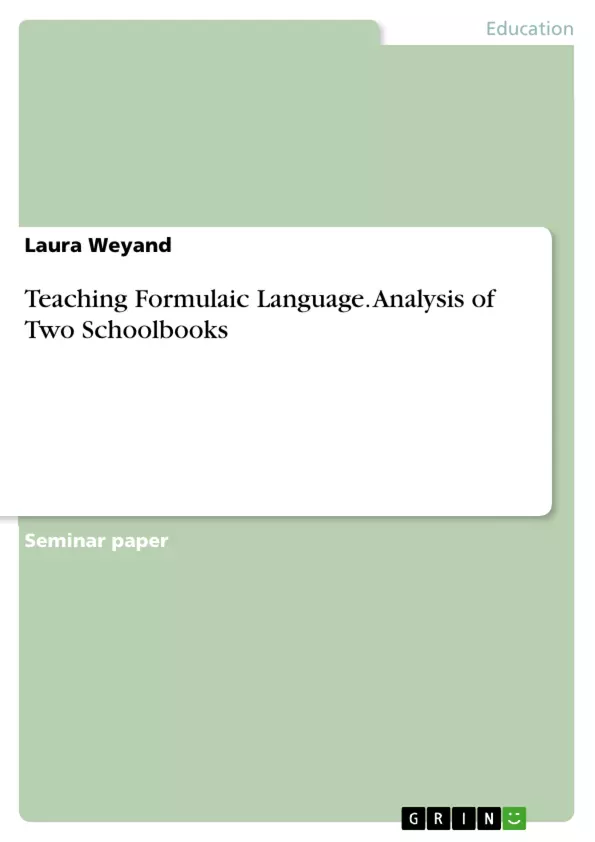After a short overview on formulaic language, the following paper will
demonstrate why teachers nowadays should teach formulaic language and that
formulaic language should be a component of the curriculum. The subsequent
contrastive schoolbook analysis will examine the occurrences of formulas in a
Spanish and an English textbook. Afterwards various explanations for the results will be given, before finally concluding with a summary and some suggestions for future teachers.
Inhaltsverzeichnis (Table of Contents)
- Introduction
- Teaching formulaic language
- Defining formulaic language
- Reasons for teaching formulaic language
- Methodology: Retrieval of data
- Results and Discussion: Frequency of formulaic sequences in a Spanish and an English schoolbook
Zielsetzung und Themenschwerpunkte (Objectives and Key Themes)
This paper examines the differences in the usage and teaching methods of formulaic language between a Spanish and an English textbook used in German schools. The primary goal is to determine whether the approaches to teaching formulaic language are similar or entirely different in these textbooks.
- The nature and definition of formulaic language in both English and Spanish.
- The importance of formulaic language in second language teaching, particularly in promoting natural and native-like language use, and increasing fluency.
- The comparison of the frequency of formulaic sequences in a Spanish and an English textbook used in German schools.
- The analysis of the methods used to teach formulaic language in the two textbooks.
Zusammenfassung der Kapitel (Chapter Summaries)
The introduction lays out the research question and the motivation behind the study. It highlights the increasing interest in formulaic language in second language teaching and the need for a comparative analysis of textbooks.
Chapter 2 delves into the definition and importance of formulaic language. It provides a detailed explanation of formulaic language, drawing on various definitions and categorizations. This chapter also presents arguments for why formulaic language should be a crucial component of the second language curriculum, emphasizing its role in promoting native-like language use and fluency.
Chapter 3 outlines the methodology employed in the study. It explains the selection of the Spanish and English textbooks and the specific units used for data analysis. The method for identifying and counting formulaic sequences is outlined, and the normalization process to compare the data from different-sized units is described.
Chapter 4 presents the results of the analysis and discusses the frequency of formulaic sequences in the two textbooks. It compares the findings and provides explanations for the observed differences. The chapter concludes with a summary of the main findings and suggestions for future teachers.
Schlüsselwörter (Keywords)
Formulaic language, second language teaching, textbook analysis, Spanish, English, native-like language use, fluency, grammar, lexicalized sentence stems, collocations, vocabulary acquisition, comparative study.
- Quote paper
- Laura Weyand (Author), 2011, Teaching Formulaic Language. Analysis of Two Schoolbooks, Munich, GRIN Verlag, https://www.grin.com/document/267009



